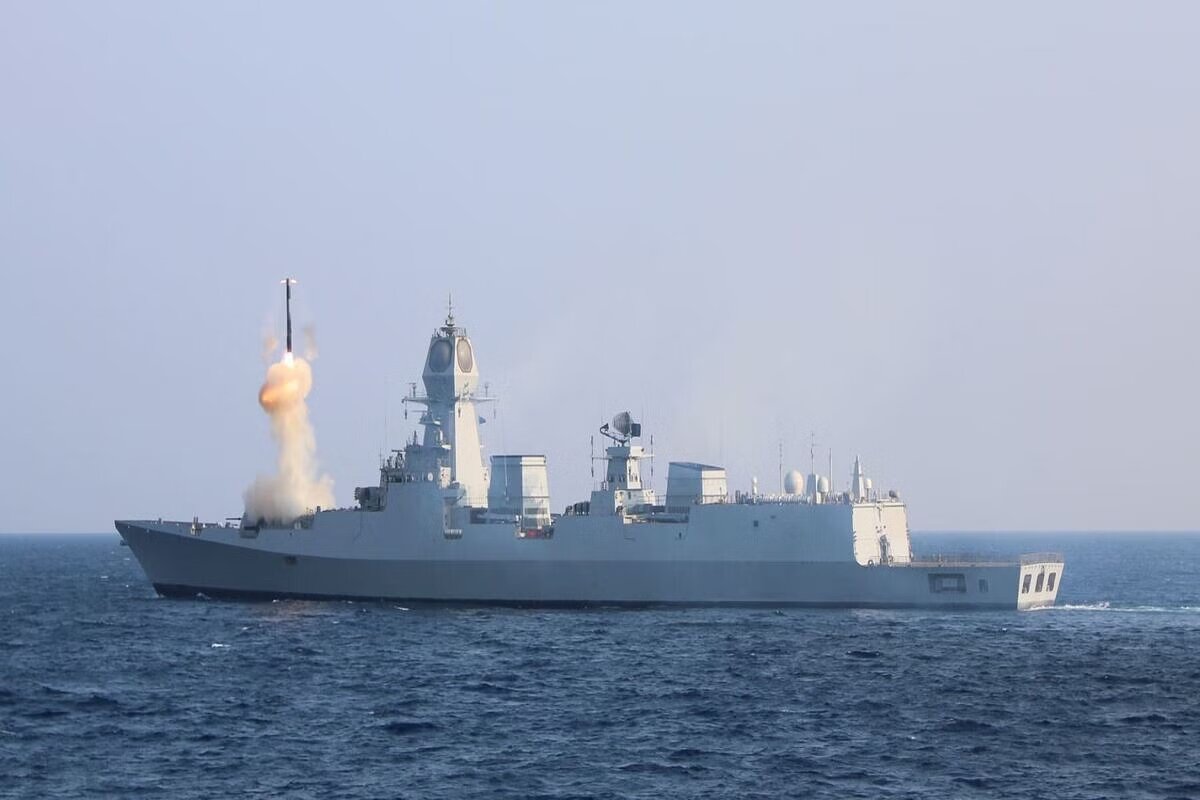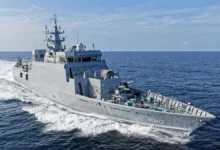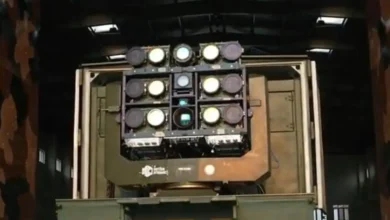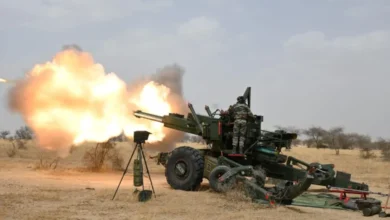Indian Navy’s Guided Missile Destroyer Imphal Hits ‘Bull’s Eye’ In Successful Test

- The Imphal moves quickly, with speeds over 30 knots (about 56 km/h), thanks to a sophisticated Combined Gas and Gas (COGAG) propulsion system powered by four gas turbines.
- Other important parts are the Indigenous Torpedo Tube Launchers from Larsen & Toubro Mumbai and the Anti-Submarine Indigenous Rocket Launchers, both from Larsen & Toubro Mumbai.
Yard 12706, the Indian Navy’s newest homegrown guided missile destroyer, did a great job firing its first Brahmos missile at sea. This was a big moment for the navy. The successful test, which was done before the ship was officially commissioned, shows how committed the Navy is to being ready for battle.
This accomplishment strengthens the idea of “Aatmanibharta” (self-reliance) and raises the Navy’s marine skills. The third ship in the Visakhapatnam-class stealth guided missile destroyers, the Imphal, is the best example of how well ships can be built in India. The INS Imphal was designed by the Indian Navy’s Warship Design Bureau and built by Mazagon Dock Shipbuilders Ltd in Mumbai. It is a mix of cutting-edge technology and new ideas from within the country.
The Imphal is a symbol of power and resilience. It was named after the brave Indian soldiers who fought in the Battle of Imphal during World War II. It can carry 7,400 tons of cargo and is 164 meters long, making the Imphal a very large and strong guided missile destroyer. Surface-to-air missiles, anti-ship missiles, and torpedoes are some of the most advanced weapons and devices that it has.
What is Imphal (Yard 12706) and why is it important?
As part of Project 15B, the Imphal (Yard 12706) destroyer is the next step in India’s military power. It builds on the work of the Kolkata-class destroyers. The arrival of the Indian Naval Ships Imphal, along with the Visakhapatnam and Mormugao, is a major step forward in both shipbuilding and technology.
Who planned Imphal (Yard 12706), and what cutting-edge technology does it have?,
The Indian Navy’s Warship Design Bureau (WDB) created Imphal, which shows how well India can build ships itself. It is known for having very advanced technology and is one of the world’s most modern warships.
What are some interesting things about Imphal (Yard 12706)?
With a length of 164 meters and a weight of 7,400 tons, Imphal is a powerful guided missile destroyer with the most up-to-date weapons and sensors. It has surface-to-air missiles, anti-ship missiles, and torpedoes in its arsenal, which makes it more useful in battle.
How does Imphal (Yard 12706) get its power, and how fast can it go?
The Imphal moves quickly, with speeds over 30 knots (about 56 km/h), thanks to a sophisticated Combined Gas and Gas (COGAG) propulsion system powered by four gas turbines. This makes sure that naval activities are quick and flexible.
What is the indigenous makeup of Imphal (Yard 12706)?
About 75% of the parts used in Imphal’s technology come from within the country, which is something the city is proud of. Medium Range Surface-to-Air Missiles from BEL Bangalore and BrahMos Surface-to-Surface Missiles from BrahMos Aerospace New Delhi are some of the most important parts. Other important parts are the Indigenous Torpedo Tube Launchers from Larsen & Toubro Mumbai and the Anti-Submarine Indigenous Rocket Launchers, both from Larsen & Toubro Mumbai. This focus on making things in India shows that the country is independent when it comes to making weapons and strengthens its position in the world at sea.
With a length of 164 meters and a weight of 7,400 tons, Imphal is a powerful guided missile destroyer with the most up-to-date weapons and sensors. It has surface-to-air missiles, anti-ship missiles, and torpedoes in its arsenal, which makes it more useful in battle.
How does Imphal (Yard 12706) get its power, and how fast can it go?
The Imphal moves quickly, with speeds over 30 knots (about 56 km/h), thanks to a sophisticated Combined Gas and Gas (COGAG) propulsion system powered by four gas turbines. This makes sure that naval activities are quick and flexible.
What is the indigenous makeup of Imphal (Yard 12706)?
About 75% of the parts used in Imphal’s technology come from within the country, which is something the city is proud of. Medium Range Surface-to-Air Missiles from BEL Bangalore and BrahMos Surface-to-Surface Missiles from BrahMos Aerospace New Delhi are some of the most important parts. Other important parts are the Indigenous Torpedo Tube Launchers from Larsen & Toubro Mumbai and the Anti-Submarine Indigenous Rocket Launchers, both from Larsen & Toubro Mumbai. This focus on making things in India shows that the country is independent when it comes to making weapons and strengthens its position in the world at sea.






Facebook Comments